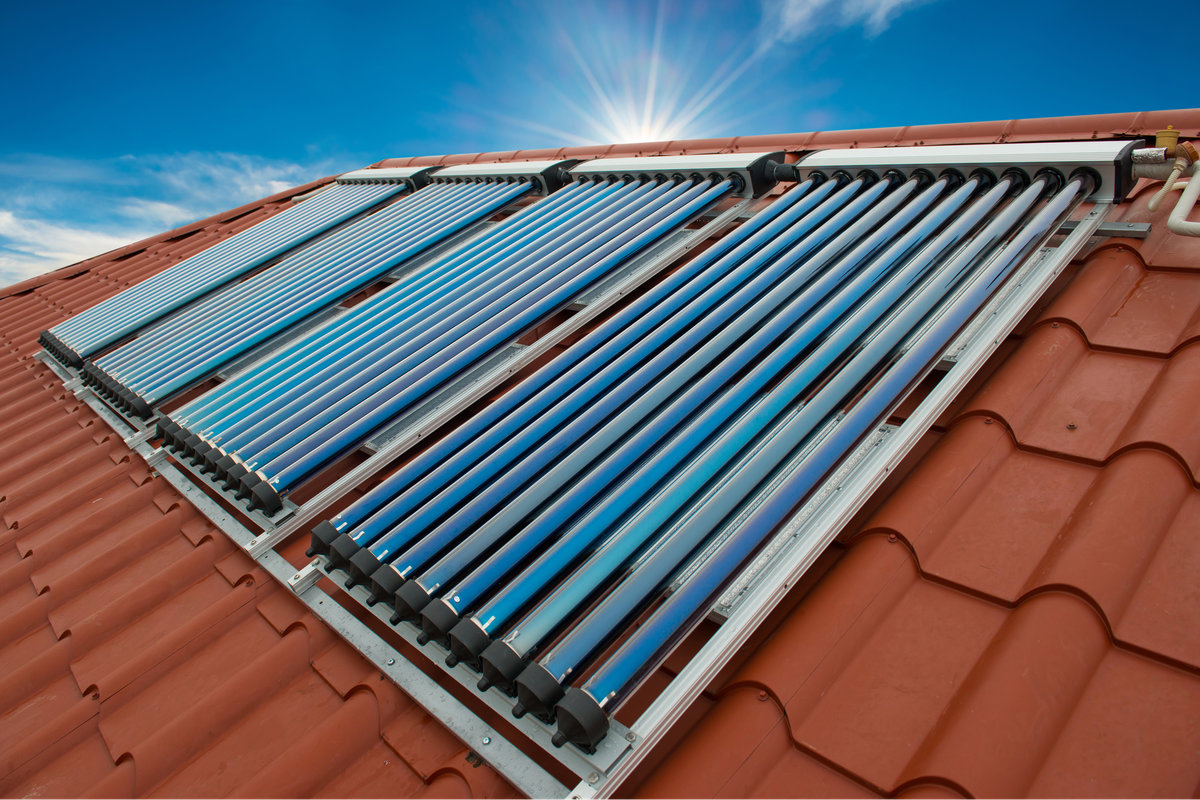SOLAR THERMAL

The solar thermal systems consist of panels that produce hot water using the sun’s energy. The solar radiation heats a liquid that circulates inside the panels. This liquid then transfers the heat absorbed to a water storage tank.
.
SOLAR SYSTEMS
The solar thermal systems are devices that allow you to capture solar energy, store it and use it in a variety of ways, in particular for heating running water instead of boilers powered by natural gas.
If the heat of the sun is used to produce electricity through the evaporation of vector fluids that power turbines connected to alternators, we speak of a thermodynamic solar system.
TYPOLOGY OF THERMOSOLAR SYSTEMS
The systems are distinguished in:
low temperature systems (up to 120 °C)
medium temperature systems (approx. 500 °C)
high temperature systems (approx. 1000 °C) which are mainly used in large industrial plants.
DEFINITION
A solar thermal system always consists of at least the following units:
- one or more collectors that give the heat of the sun to the fluid; there are various types, from the simple copper plate crossed by a serpentine and painted with black paint, to the selective panel treated with titanium dioxide (TINOX), to the vacuum absorber. In the first two cases the absorber is protected by a tempered glass, which can be prismatic;
- a fluid storage tank.
There are four types of installations:
- natural circulation: in this type, the fluid is the water itself which, when heated, rises by convection in a storage tank (boiler), which must be placed higher than the panel, from which it is distributed to domestic users; the circuit is closed, as the water that is consumed is replaced by the external influx. This system has the advantage of simplicity but is characterised by high heat dispersion, to the detriment of efficiency.
- forced circulation: a circuit composed of the panel, a coil placed inside the boiler and the connection pipes. A pump, called a circulator, allows the transfer of the heat collected by the fluid, in this case propylene glycol, similar to ethylene glycol (the liquid used for car radiators), to the coil located inside the boiler. The circuit is considerably more complex, having to provide an expansion tank, temperature control and other components, and has an electrical consumption due to the pump and control unit, but has a much higher thermal efficiency, since the boiler is placed inside and therefore less subject to heat loss during the night or to adverse weather conditions.
- emptying: the system is similar to the forced circulation system, only that the system is filled and then used only when it is necessary or possible. If the system has reached the desired temperature, it is emptied, or if there is no sun, the system does not fill. this also allows to increase the number of solar collectors. The only constraint lies in the need to have a minimum slope between the collector and the collection tank.
solar tracker concentration: able to concentrate the sun’s rays in correspondence with the heat-conducting fluid thanks to a particular parabolic shape.
SOLAR THERMAL COLLECTOR
The “solar collector” or solar panel is the basic device on which this technology is based. The collectors are crossed by a heat transfer fluid channeled into a solar circuit that will lead it to an accumulator. The accumulator has the function of storing as much thermal energy as possible in order to be able to use it later, when needed. There are various types, the most recent of which are vacuum tubes which have a high efficiency but are more prone to breakage.

